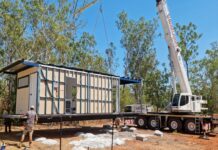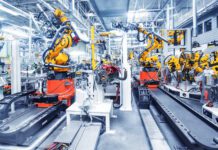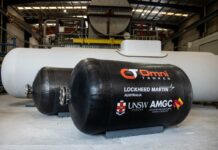Australia’s manufacturing sector needs to shift towards high value, knowledge intensive industries to remain globally competitive, according to Assistant Minister for Industry, Innovation and Science Craig Laundy.

Speaking at the University of Technology Sydney Business School conference, Mr Laundy highlighted that the latest manufacturing data showed predictions of the sector’s demise were premature, with a 3.3 point rise in the November AiGroup’s Performance of Manufacturing Index to 54.2.
“Despite the challenges of weak global demand, China’s slowing growth, the fallout from Brexit and a new US Administration, we have a chance to shape our economic future by focusing on our strengths and growth areas of the economy,” Mr Laundy said.
“In manufacturing, we can do more to seize the opportunities disruption has to offer and to gain niches in the global production value chain, including greater integration of Industry 4.0 methods in Australian manufacturing. Advanced industrial nations like Australia are moving into an era of smart factories, using Industry 4.0 to prepare their industrial bases for the future.”
He said the Prime Minister’s Industry 4.0 Taskforce complemented initiatives under the National Innovation and Science Agenda by connecting Australian industry to global industrial leaders to ease their transition into the smart, niche and export-focused industries of the future.
”Manufacturing continues to be an important part of Australia’s industry mix; accounting for 6.1 per cent of Australia’s GDP and 7.4 per cent of employment, but its importance goes way further. Many firms use goods manufactured in Australia as inputs to their business, and others provide inputs to manufacturing,” the Assistant Minister added.
“Manufacturing also makes large contributions to R&D, skills and technology transfer, exports, and productivity growth. In the 2015–16 financial year, manufacturing generated $100 billion in export income, second only to mining’s $117 billion.”
Mr Laundy stressed that manufacturing in the 21st century was no longer about low-skilled workers and scale-intensive production, but about the use of advanced manufacturing to supply high-value components and related services to the global supply chains of multinational firms.
“For example, the Advanced Manufacturing Growth Centre’s soon to be released Sector Competitiveness Plan has found that our highly skilled manufacturing businesses in medical technology and aerospace enjoyed a labour cost advantage of around 40 per cent over their US counterparts,” Mr Laundy continued.
“The plan details the opportunities for Australian businesses to increase competitiveness in skilled labour and increase technical leadership.”
He also pointed out that CSIRO’s recently released Advanced Manufacturing Roadmap advocates for a move towards globalisation and digitisation, saying that Australian science can turn disruptors and increased globalisation into opportunities for value creation in the country.
“Ultimately the responsibility for seizing the opportunities and tackling the challenges that disruption and structural change present lies with business,” he added.
“Governments’ role is creating the right policy settings for Australian businesses to thrive.”




















